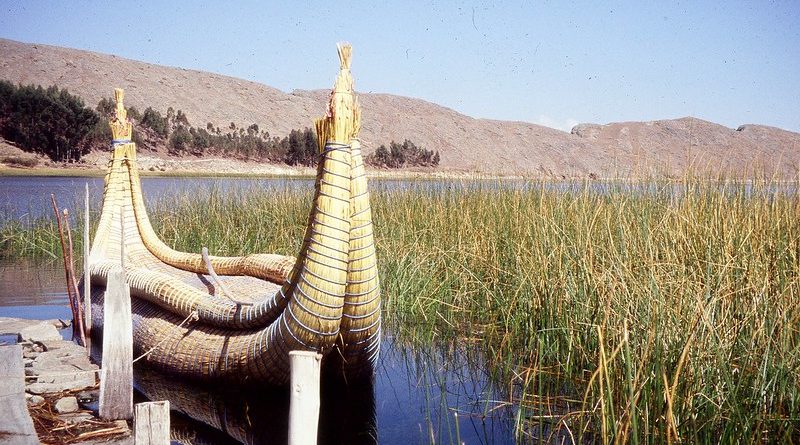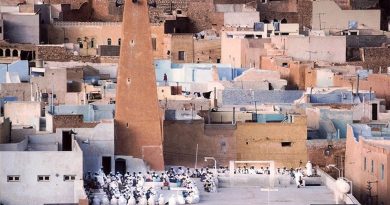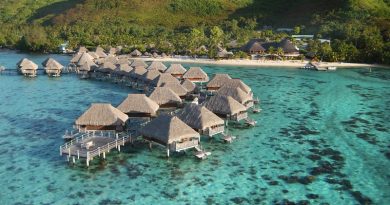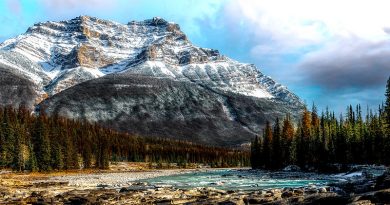Bolivia: Destinations
Copacabana
Situated on the banks of Lake Titicaca, Copacabana is most often visited by those on their way to Peru from Bolivia. This tranquil port is the perfect stopover for a spot of relaxation, a taste of the famous lake trout and also for a chance to appreciate the spiritual essence of Bolivia.
Copacabana is steeped in religion. Apart from its position, by the waters of one of the most spiritual of locations in Inca history, the actual town is renowned for its large cathedral – The Basilica of Our Lady of Copacabana. Inside this beautiful building lies the Virgin de Copacabana: encased in gold and silver she is reputedly invested with healing powers.
There is also an additional attraction for the visitor if you happen to be in Copacabana on a Sunday. In accordance with the massive respect and faith that the Bolivians have for their various religions, every Sunday the town is filled with people bringing their cars to be blessed by the Christian priest. This scene may seem unusual to the foreigner, however when considering the amount of roads that lack paving, it seems advisable!
La Paz
La Paz is the governmental capital of Bolivia. Sitting high on the Altiplano, this city is often described as unlike any other. The altitude here makes it a challenging and often rather cold place to visit, yet it is fascinating in its unique character and atmosphere. Due to the extreme altitude it is especially important here to be aware of the effects of altitude sickness and to ward off the ‘soroche’ headaches by taking it slowly and keeping well hydrated. People who are flying in from other areas are particularly prone to feeling the effects as they have not had time to acclimatise.
Home to over one million of the eight million inhabitants of Bolivia, La Paz is a crammed juxtaposition of the modern and the traditional lifestyles. It can appear from the air as having simply dropped from the sky, an urban sprawl, bang in the middle of such a vast and beautiful natural landscape.
This characteristic mixture in style and time is reflected clearly in the fashion or practical clothing of those who live here; there is the traditional Indian attire of the bowler hat, full skirts over layered petticoats, boots and large shawls alongside the modern mini skirt and fitted jacket.
The river running through the city also seems to reflect this mish mash of conditions and lifestyles. As the city sewer, it dictates the increase in lettuce price: the further away from the river banks that the lettuce is grown. However, in contradiction to this you will find that the richer city dwellers live closer to this stretch of stinking water than the poor. The higher regions that the traveller may view as valued and sought after for their views and space are the coldest, most infertile areas on the Altiplano and extremely incompatible with any construction.
La Paz is a city for those whose curiosity impels them to explore the nooks and crannies of any unknown territory. Wandering around is a taste-tempting and eye-catching experience. It is a haven for the wandering, eternal snack lover. On each street corner hot smells of savoury Bolivian treats waft from grills and cabinets and for the sweet-toothed, candy stands litter the streets offering out their American imports. This is also a city for the bargain hunter and the browser, offering a gritty medley of the traditional and new for you to explore.
The markets in the city are uniquely different. One specialises in Bolivian handicraft and then there is the smaller witches’ market. Close by is the sprawling ‘everyday’ market. Wandering through here is again another chance to witness the co-existence of the traditional and the modern. Stalls selling yards of the tough, brightly coloured, striped Bolivian cloth are alongside others selling the latest trainers and cosmetics. Useful stalls to visit are those that sell the extremely warm alpaca blankets and winter style clothes needed for the colder areas of Bolivia.
Potosi
At 15,000 feet above sea level, the Spanish colonial city of Potosi is the highest city in the world. Founded after the discovery of gold and silver in the surrounding area in 1544, the city became renowned for its wealth and prosperity. The mines here have now been largely exhausted of their original deposits, however, Potosi’s past grandeur is still apparent in the characteristic architecture that maintains its magnificent beauty.
The main attraction for the tourist is taking part in a tour around the mines. The workers who still mine here exist in this underground world of shafts and tunnels in order to glean the remaining zinc and lead from the soil. It is certainly an eye opener to experience for yourself this lifestyle that can seem shockingly dated in its lack of health and safety regulations, and be warned, these tours are not for the claustrophobic or the timid!
There are certain parts where the crumbly roof of the tunnel is too low to stand up completely and while walking you may often be forced into the seemingly nonexistent side of the tunnel, to allow a passing mineral carrier by.
However, all that having been said these tours are incredibly interesting and allow the visitor to understand, on a much deeper level, the people of this region.
Upon embarking on the tour you should buy the recommended gifts for the miners. These consist of cigarettes, sodas, condensed milk, coca leaves and – scarily – dynamite! The coca leaves, as in many other areas of work and life in Bolivia, are a common sight. When chewed with ‘llipta’, balls of ash, the lime in the ash releases the alkaloids in the leaves and they become a mild stimulant and appetite suppressant. This allows the miners to survive more easily on the small amount of food that they can afford.
Your gifts will be accepted with serious appreciation, however in addition to their personal consumption, the miners also offer their goods to the god of the mines – ‘El Tio’. Statues of El Tio have been built at several openings in the tunnels and you will find them covered with offerings. These sacrifices are said to ensure protection and prosperity for the miners in this, their backbreaking walk of life.
Uyuni
For the traveller, Uyuni is the starting point for the Salt Lake tours and for Bolivia, it is a commercial and communication centre. In the winter months Uyuni is incredibly cold with temperatures falling as low as -20 degrees Celcius at night, so if you are travelling at this time of year, it is essential to have warm clothes with you. This should not be a problem though as this is the land of the alpaca (woolly mammal like a llama used for its wool).
Around the main square you will find a huge number of travel guides offering tours across the Salt Lakes. If you are travelling alone, it is not a problem. There are always tours needing more people to make up numbers and this is also a great way to meet people! It is worth shopping around for the best deals as nearly all the tours offer the same itinerary so the variation in price doesn’t really reflect any added bonuses.
Many travellers only end up staying here a couple of nights at most, on route to the Salar. There is not a great amount to do in central Uyuni.
However there is enough to interest the curious while getting ready for your trip. For a further understanding of the significance of this town, there is the prominent statue of an armed railway worker representing Uyuni’s importance as a major railway junction, and then there are also a few shops and a small market.
The market mostly sells a random mix of dried fruit, nuts, batteries and clothes. If, for the trip, you want to take chocolate or other snacks to supplement the meals provided, it is advisable to buy them here before you begin your tour.
For the evening you will find that there isn’t a wide choice of restaurants but the atmosphere in the few places that there are is vibrant. The excitement at what lies ahead and the taste of a delicious pizza or even some deep fried chicken (something that strangely seems to penetrate a surprising amount of towns in South America!) are a potent combination to stir up the eager customers. For some evening entertainment there is a small local cinema that tends to play the latest Hollywood blockbuster in English, with subtitles.
However, take note, if you are a light sleeper beware of the hotels that are situated next door to the cinema. The walls are notoriously thin so you will find that your sleep is sacrificed for an audio broadcast of the current film. In addition, it is worth investigating whether your hotel has a sufficient supply of water. Uyuni itself has a limited water supply so the times when hot water is available may be limited or you may find that sometimes there is no water at all.
Uncia
Uncia is situated amid the remote and stark surroundings of volcanoes, huge lakes and vast plains, a landscape that has a fierce and overwhelming beauty. It is a small mud-built town close to the famous ex-mining center of Ouro. Come here to relax and bask in the local hot springs but also to experience a true Latino style fiesta in honour of San Miguel, the town’s patron saint.
By Georgia Levison




